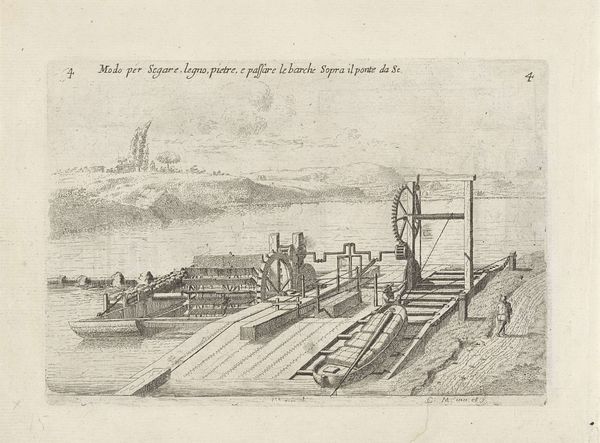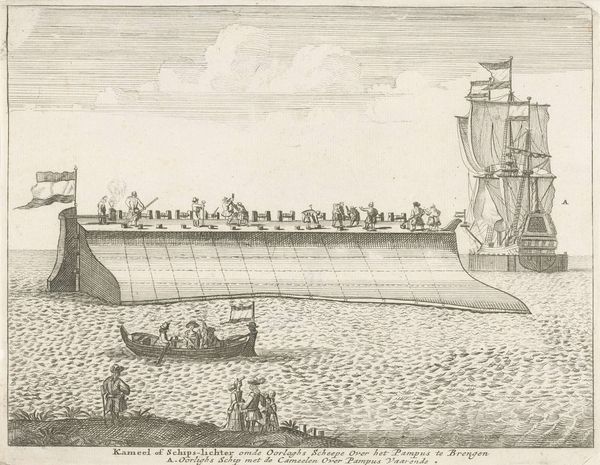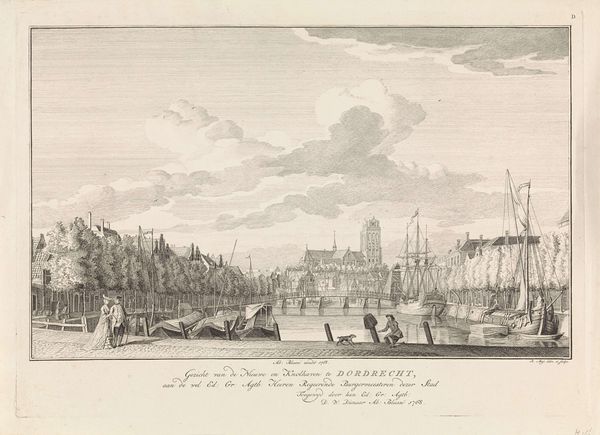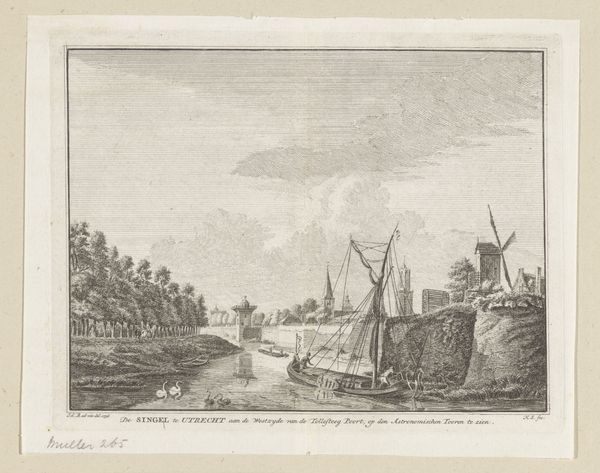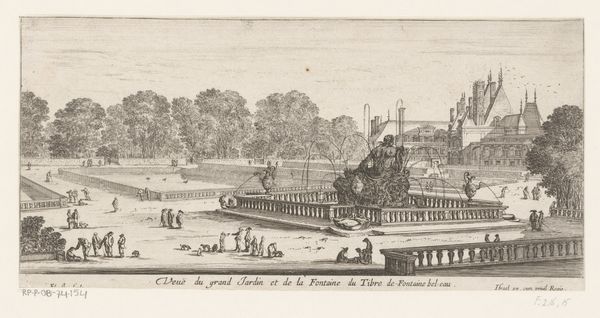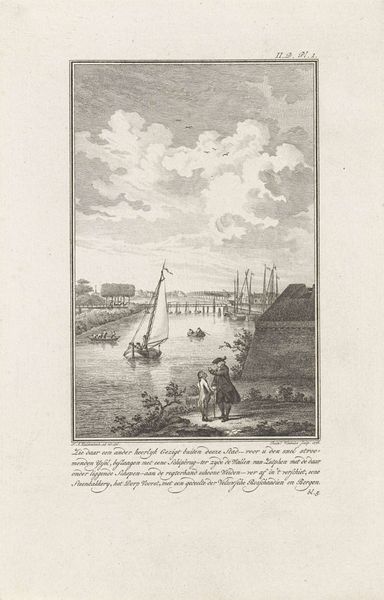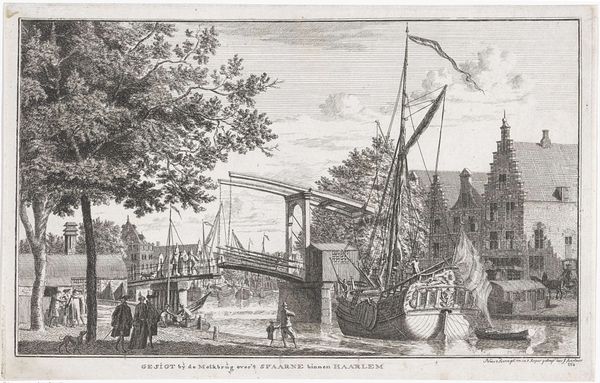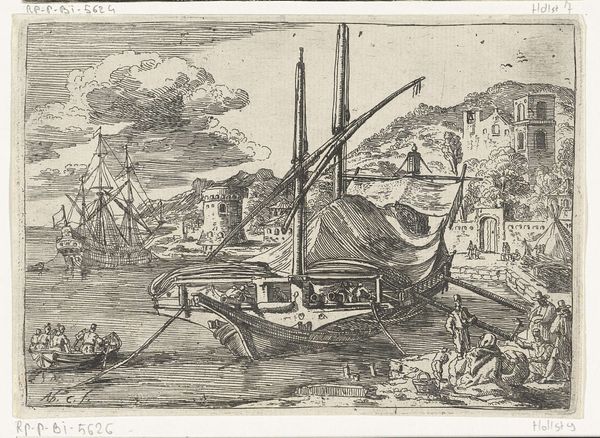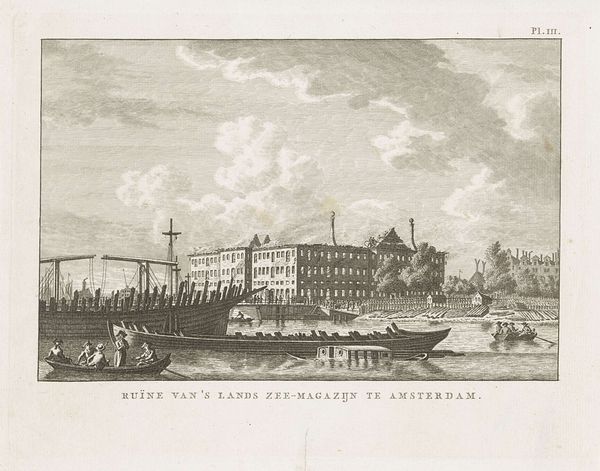
print, engraving
#
dutch-golden-age
# print
#
old engraving style
#
landscape
#
river
#
engraving
Dimensions: height 147 mm, width 213 mm
Copyright: Rijks Museum: Open Domain
Editor: Here we have Cornelis Meijer's "Watermolen en overtoom," likely from the late 17th century. It's an engraving, giving it a really precise, almost technical feel. The linear quality makes everything seem very ordered. What stands out to you in terms of composition? Curator: Indeed. Notice how the artist uses the horizontal lines of the water, the platforms, and even the distant fields to create a strong sense of stability. However, this stability is punctuated by the verticality of the trees, the figures, and the mechanism itself. Consider how this interplay directs the viewer's gaze across the surface. Are we drawn more to the land or water? Does Meijer offer one compositional plane in favour of another? Editor: I think the mechanics on the water edge are the point of focus. But that raises another question for me: what's the purpose of showcasing all the working parts so clearly? Curator: The very lines delineating the structure create a kind of transparency. Observe how the precision elevates functional structures to aesthetic objects, inviting consideration beyond mere utility. Consider, too, the function of each component; the wheel's curve opposing the hard horizontals surrounding it, softening them. Editor: That's interesting – so the artist is celebrating the form and arrangement of these structures, not just their use. Looking closely, the varying thickness of the lines almost creates a hierarchy of forms and their prominence on the flat space. Thanks for expanding my understanding. Curator: My pleasure. Formal analysis directs us to precisely these intricacies; it enriches the viewing experience immeasurably.
Comments
No comments
Be the first to comment and join the conversation on the ultimate creative platform.
